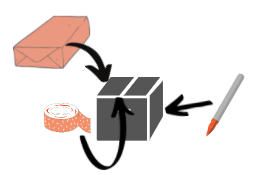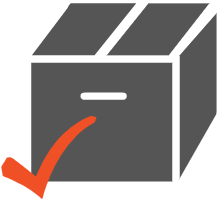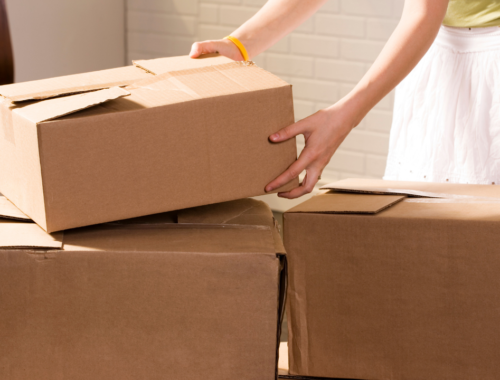
Moving into a new place is always a challenge; however, if you are a book-lover, things get more complicated. A true bookworm can have hundreds of books to pack, so it is essential to know how to handle the task properly from the beginning.
The key to a successful book packing and moving is having a system. You’ll have to decide what to take and what to toss, prepare packing materials, sort books by size and type, secure boxes, and label them. Let’s take a look at every step in detail.
 Thin out Your Collection
Thin out Your Collection
Moving costs money, especially if you do it long distance. Unless you use your own car, a moving company may charge you a lot for a move depending on the amount of stuff you have, its weight, and so on. Therefore, it makes sense to get rid of the books you can do without. If you start packing early, you’ll have time to consider every book and whether you still need it. You can free a lot of space by doing so.
Dispose of These Books
Now that you’ve gone through your entire collection, you are probably facing a box or two with the books you no longer need. You have two options apart from simply throwing them away—which we do not recommend—selling them or donating them.
 Sell Books
Sell Books
You can arrange a garage sale or list them online and sell them in bulk. If you have more time, you can try selling your books to buyback vendors (check BookScouter and compare the price offers from more than 30 vendors).
 Donate Books
Donate Books
If selling sounds like a lot of hassle and you are short of time, you can donate used books to a local charity or library. However, if the condition of your books isn’t good enough to be given to someone else, you can explore ways to recycle textbooks and used books that you no longer need.
Stuff You’ll Need
Once you are done with sorting and selling/donating, you can start packing the books you’ll be taking with you. On the preparation step, make sure you have proper tools and materials.
Materials

- Cardboard boxes
- Packing paper/textile
- Sticky tape
Tools
- Marker
 Group Your Books by Size
Group Your Books by Size
We strongly recommend grouping your books by size before you start putting them into boxes. It’ll help you to pack more efficiently. Besides, when you unpack the books in your new home, it will be easier to arrange them neatly on the shelves.
Choose and Prepare the Boxes
After you’ve organized books in piles according to their sizes, find cardboard boxes for them. If you are using new boxes, put them together first and seal the bottom with the tape to ensure that it will hold. If you are using second-hand boxes, check whether they are not damaged or torn. It won’t be nice to have all your books scattered on the pavement if the box tears.
 Pack Hardcovers
Pack Hardcovers
We recommend packing hardcovers separately from paperbacks. It is also better to place the hardcover books in a standing position, with their spines against the box’s side. This will save space (especially if you’ve already arranged the books by size) and keep them safe.
Pack Paperbacks
Pack your paperback books horizontally to prevent pages from bending. Again, arranging books by size will save space in a box and allow packing them more neatly. Alternatively, you can pack them in a standing position (this time, with their pages against the box’s side). However, don’t just throw the books into the box at random, as you may damage them.
 Fill the Gaps in a Box
Fill the Gaps in a Box
Once you have packed the books, fill all the gaps in the boxes with some material (paper, textile, etc.). If you use your clothes, it’s even better: you’ll be able to move with fewer boxes.
 Secure the Boxes
Secure the Boxes
Packed the books, filled the gaps? It’s time to close the boxes and seal them. Use sticky tape to secure the boxes and make sure they won’t open. If you travel long-distance, secure the boxes properly, as you can’t know how much they will be shifted in the process.
Label the Boxes
The last step is to label the boxes. Even better if you do it right after you close and seal every box, as you can get easily confused standing in front of 10 identical boxes after you’ve packed everything. If any of the boxes contains the books you are especially attached to, label them as fragile. When the moving company collects your boxes, they’ll know that this particular box should be treated with extra care.
![]()
If you have many books, moving can be exhausting. However, if you know the right steps and follow them, it can be simple and straightforward. We hope that next time you move, you’ll have no problems with your precious book collection.





